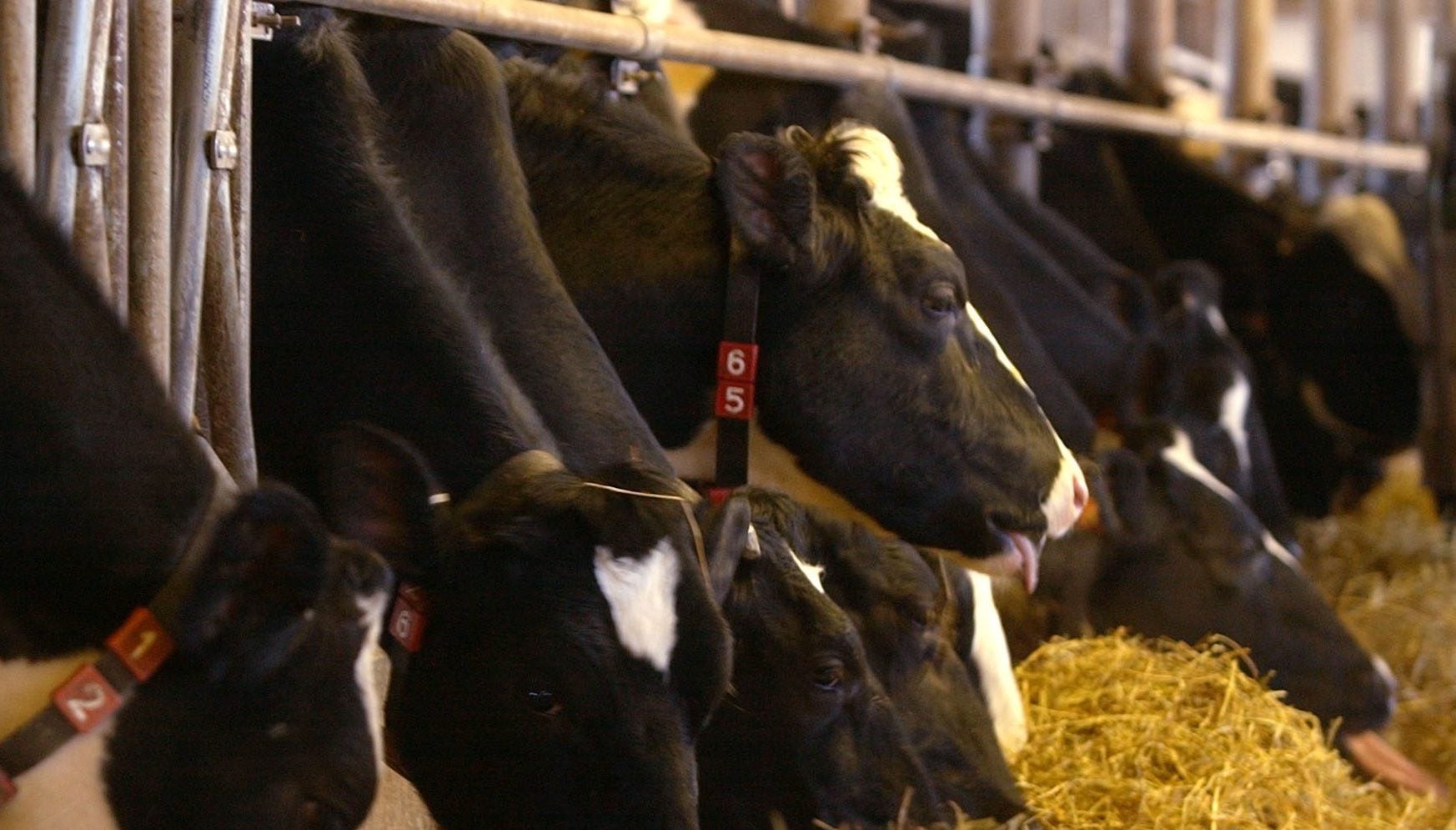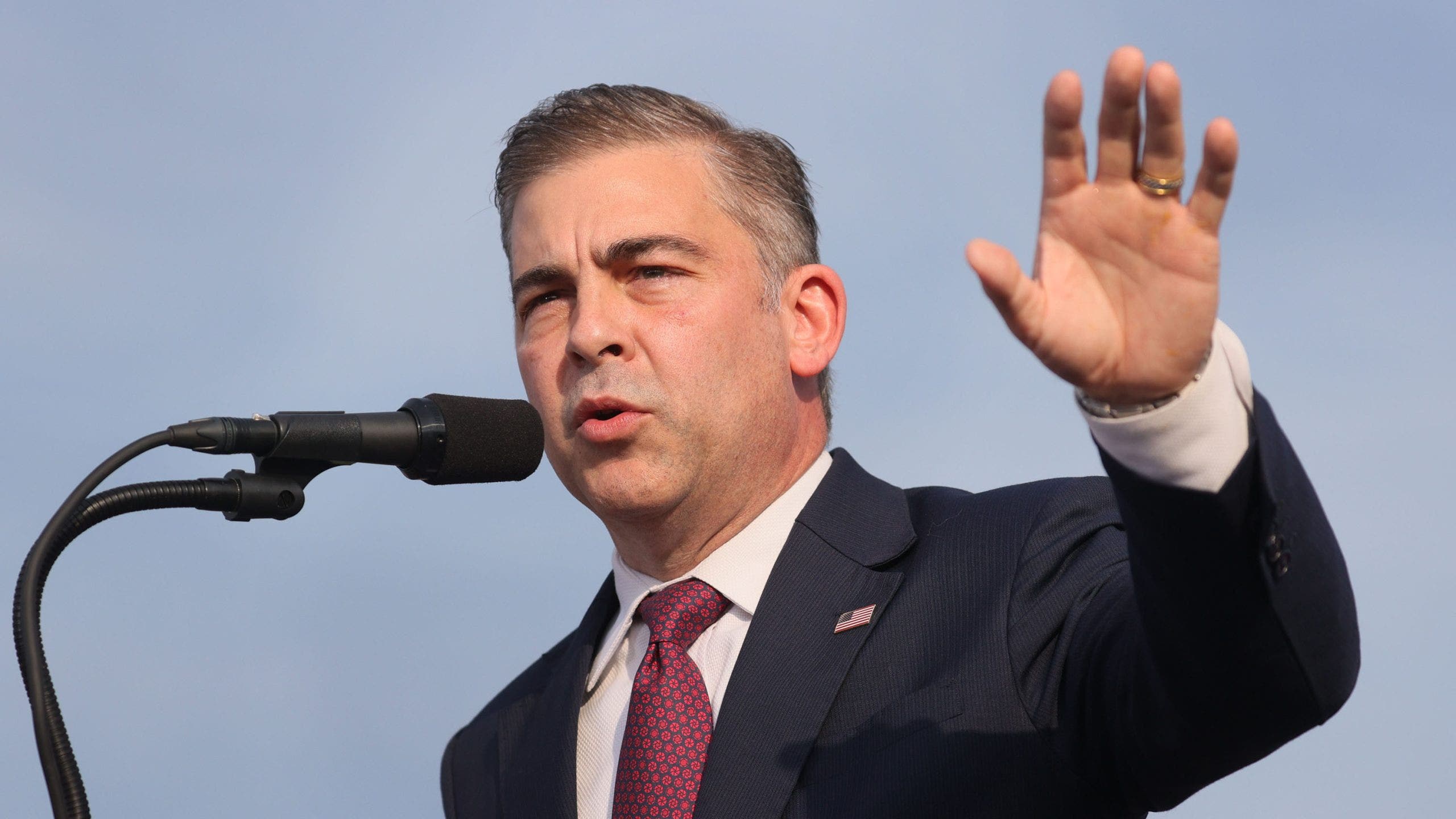Science
A First Look From NASA’s New Air Pollution Satellite

When scientists switched on the instrument aboard a new satellite this summer, they got a preview of what will soon be the nation’s first continuous record of air pollution.
The satellite will stay parked above North America and provide scientists with hourly daytime updates on air pollution nationwide. On Thursday, researchers released their first images, which show changes in nitrogen dioxide pollution over the United States over the course of a day.
“It’s really exciting to see the instrument just working as expected,” said Xiong Liu, the deputy mission director and a physicist at the Center for Astrophysics run by Harvard University and the Smithsonian Institution. The satellite instrument, called TEMPO, will be able to measure several other pollutants as well.
The images come during a summer of exceptionally bad air quality for the United States, with smoke from wildfires blanketing multiple cities and regions. But even before this summer, over the past decade or so, the gains in air quality Americans have enjoyed since the passage of the Clean Air Act in 1970 had started to plateau.
While air pollution has improved over the years, “one-third of Americans are still living in unhealthy levels of air pollution,” Dr. Liu said.
Nitrogen dioxide comes from burning fuel and creates other types of pollution through chemical reactions in the air. The images show clear hot spots of the gas around major cities, with higher levels during the morning and evening when there’s more traffic.
In addition to peering down on Earth via the new satellite, scientists fanned out across the country on foot and in research planes this July and August, in a tightly choreographed production to try to understand why air quality was no longer improving.
Because pollutants can quickly travel thousands of miles on the wind, it’s been hard for scientists to pinpoint the biggest sources of pollution on a national scale. TEMPO’s hourly updates are expected to be a “real game changer” in giving researchers the ability to track air pollution from its source, said Brian McDonald, an environmental engineer with the National Oceanic and Atmospheric Administration who is coordinating this summer’s field research with the satellite.
Car traffic has historically been one of the biggest contributors to air pollution, but tighter emissions standards for motor vehicles have reduced pollution from driving. At the same time, the relative importance of consumer products and materials, like paint and pesticides, that emit pollutants known as volatile organic compounds has gone up, Dr. McDonald explained.
These compounds react with nitrogen dioxide in the air to create harmful ground-level ozone, which has remained stubbornly high in some places, especially in California and in major metropolitan areas across the country. While the ozone layer high in the atmosphere protects us from cancer-causing ultraviolet radiation, ozone near the ground can aggravate or cause respiratory diseases like asthma, bronchitis and emphysema.
Another persistent problem is fine particulate pollution, made of microscopic particles small enough to enter the bloodstream and cause heart and lung disease, strokes and even premature death in severe cases. This pollution, also known as PM2.5, started increasing again around 2016 after years of decline.
Wildfires, which are becoming more frequent and more intense as climate change creates hotter and drier conditions, appear to be the main culprit behind this reversal, according to a study published last fall.
That research relied on an older satellite that provides daily measurements, said Marshall Burke, a professor of environmental policy at Stanford University and one of the authors of the study. Currently, he and his colleagues rely heavily on computer models of how pollutants move with the wind to fill in the blanks between actual observations.
Dr. Burke, who is not involved in the TEMPO mission, is looking forward to having hourly data from the satellite, which will be “closer to a video,” he said. “As you have more and more images, it’s much easier to fill in the map of where things came from,” he added.
TEMPO will be able to track air pollution down to a resolution of about four square miles. That’s where this summer’s coordinated flights, drives and walks come in.
“The data from these field campaigns acts like a decoder ring” for the satellite instrument, said Tracey Holloway, a professor of energy analysis and policy at the University of Wisconsin-Madison who studies air quality but is not involved in this project.
One of the places scientists are gathering data at a granular local level is New York City. Even cities that routinely monitor their air don’t typically have enough equipment to cover all neighborhoods. That’s a problem because within individual cities or regions, air pollution tends to be unevenly distributed.
Since late July, a dozen researchers led by Audrey Gaudel and Prathap Ramamurthy of NOAA have taken turns walking in pairs around the city, carrying a backpack full of buzzing air quality sensors. Onlookers frequently asked if the scientists were going fishing, because of the long, skinny tubes that stick out of the pack to suck in air samples.
Each day, one colleague tracked the flight paths of NASA’s research aircraft and gave updates on WhatsApp so the trekkers could walk underneath the planes. The data sets would be compared later. The researchers have covered a dozen routes, making sure to include economically disadvantaged neighborhoods and neighborhoods with more residents of color. These areas often face disproportionate air pollution, but have sparse data.
“We’re hoping to have better models and better prediction on the street level,” said Yoshira Ornelas Van Horne, a professor of environmental health at Columbia University and another TEMPO collaborator.
It will take a few months to analyze all the data, but the walks themselves have already highlighted the connection between climate change and air quality. (Dr. Ramamurthy said some of the hourslong walks at the height of summer were “horrible.”) Higher temperatures are generally associated with higher levels of ozone pollution, and on the hottest sampling day, ozone readings rose above the national standards set by the Environmental Protection Agency, Dr. Gaudel noted.
Data from the TEMPO satellite should be available to the general public in spring 2024. In the meantime, more than 400 users, including many state and federal agencies, have signed up as “early adopters.”
Researchers at the Mount Sinai Health System in New York plan to use TEMPO data to study how air pollutants affect children’s asthma symptoms. The Connecticut Bureau of Air Management plans to use the data to investigate where the state’s unusually high ozone pollution comes from.
Dr. Ornelas Van Horne hopes this summer’s research will arm policymakers with the information needed to do something about the nation’s lingering air quality problems. “We’re all in agreement that air pollution is bad,” she said.

Science
Cluster of farmworkers diagnosed with rare animal-borne disease in Ventura County

A cluster of workers at Ventura County berry farms have been diagnosed with a rare disease often transmitted through sick animals’ urine, according to a public health advisory distributed to local doctors by county health officials Tuesday.
The bacterial infection, leptospirosis, has resulted in severe symptoms for some workers, including meningitis, an inflammation of the brain lining and spinal cord. Symptoms for mild cases included headaches and fevers.
The disease, which can be fatal, rarely spreads from human to human, according to the U.S. Centers for Disease Control and Prevention.
Ventura County Public Health has not given an official case count but said it had not identified any cases outside of the agriculture sector. The county’s agriculture commissioner was aware of 18 cases, the Ventura County Star reported.
The health department said it was first contacted by a local physician in October, who reported an unusual trend in symptoms among hospital patients.
After launching an investigation, the department identified leptospirosis as a probable cause of the illness and found most patients worked on caneberry farms that utilize hoop houses — greenhouse structures to shelter the crops.
As the investigation to identify any additional cases and the exact sources of exposure continues, Ventura County Public Health has asked healthcare providers to consider a leptospirosis diagnosis for sick agricultural workers, particularly berry harvesters.
Rodents are a common source and transmitter of disease, though other mammals — including livestock, cats and dogs — can transmit it as well.
The disease is spread through bodily fluids, such as urine, and is often contracted through cuts and abrasions that contact contaminated water and soil, where the bacteria can survive for months.
Humans can also contract the illness through contaminated food; however, the county health agency has found no known health risks to the general public, including through the contact or consumption of caneberries such as raspberries and blackberries.
Symptom onset typically occurs between two and 30 days after exposure, and symptoms can last for months if untreated, according to the CDC.
The illness often begins with mild symptoms, with fevers, chills, vomiting and headaches. Some cases can then enter a second, more severe phase that can result in kidney or liver failure.
Ventura County Public Health recommends agriculture and berry harvesters regularly rinse any cuts with soap and water and cover them with bandages. They also recommend wearing waterproof clothing and protection while working outdoors, including gloves and long-sleeve shirts and pants.
While there is no evidence of spread to the larger community, according to the department, residents should wash hands frequently and work to control rodents around their property if possible.
Pet owners can consult a veterinarian about leptospirosis vaccinations and should keep pets away from ponds, lakes and other natural bodies of water.
Science
Political stress: Can you stay engaged without sacrificing your mental health?

It’s been two weeks since Donald Trump won the presidential election, but Stacey Lamirand’s brain hasn’t stopped churning.
“I still think about the election all the time,” said the 60-year-old Bay Area resident, who wanted a Kamala Harris victory so badly that she flew to Pennsylvania and knocked on voters’ doors in the final days of the campaign. “I honestly don’t know what to do about that.”
Neither do the psychologists and political scientists who have been tracking the country’s slide toward toxic levels of partisanship.
Fully 69% of U.S. adults found the presidential election a significant source of stress in their lives, the American Psychological Assn. said in its latest Stress in America report.
The distress was present across the political spectrum, with 80% of Republicans, 79% of Democrats and 73% of independents surveyed saying they were stressed about the country’s future.
That’s unhealthy for the body politic — and for voters themselves. Stress can cause muscle tension, headaches, sleep problems and loss of appetite. Chronic stress can inflict more serious damage to the immune system and make people more vulnerable to heart attacks, strokes, diabetes, infertility, clinical anxiety, depression and other ailments.
In most circumstances, the sound medical advice is to disengage from the source of stress, therapists said. But when stress is coming from politics, that prescription pits the health of the individual against the health of the nation.
“I’m worried about people totally withdrawing from politics because it’s unpleasant,” said Aaron Weinschenk, a political scientist at the University of Wisconsin–Green Bay who studies political behavior and elections. “We don’t want them to do that. But we also don’t want them to feel sick.”
Modern life is full of stressors of all kinds: paying bills, pleasing difficult bosses, getting along with frenemies, caring for children or aging parents (or both).
The stress that stems from politics isn’t fundamentally different from other kinds of stress. What’s unique about it is the way it encompasses and enhances other sources of stress, said Brett Ford, a social psychologist at the University of Toronto who studies the link between emotions and political engagement.
For instance, she said, elections have the potential to make everyday stressors like money and health concerns more difficult to manage as candidates debate policies that could raise the price of gas or cut off access to certain kinds of medical care.
Layered on top of that is the fact that political disagreements have morphed into moral conflicts that are perceived as pitting good against evil.
“When someone comes into power who is not on the same page as you morally, that can hit very deeply,” Ford said.
Partisanship and polarization have raised the stakes as well. Voters who feel a strong connection to a political party become more invested in its success. That can make a loss at the ballot box feel like a personal defeat, she said.
There’s also the fact that we have limited control over the outcome of an election. A patient with heart disease can improve their prognosis by taking medicine, changing their diet, getting more exercise or quitting smoking. But a person with political stress is largely at the mercy of others.
“Politics is many forms of stress all rolled into one,” Ford said.
Weinschenk observed this firsthand the day after the election.
“I could feel it when I went into my classroom,” said the professor, whose research has found that people with political anxiety aren’t necessarily anxious in general. “I have a student who’s transgender and a couple of students who are gay. Their emotional state was so closed down.”
That’s almost to be expected in a place like Wisconsin, whose swing-state status caused residents to be bombarded with political messages. The more campaign ads a person is exposed to, the greater the risk of being diagnosed with anxiety, depression or another psychological ailment, according to a 2022 study in the journal PLOS One.
Political messages seem designed to keep voters “emotionally on edge,” said Vaile Wright, a licensed psychologist in Villa Park, Ill., and a member of the APA’s Stress in America team.
“It encourages emotion to drive our decision-making behavior, as opposed to logic,” Wright said. “When we’re really emotionally stimulated, it makes it so much more challenging to have civil conversation. For politicians, I think that’s powerful, because emotions can be very easily manipulated.”
Making voters feel anxious is a tried-and-true way to grab their attention, said Christopher Ojeda, a political scientist at UC Merced who studies mental health and politics.
“Feelings of anxiety can be mobilizing, definitely,” he said. “That’s why politicians make fear appeals — they want people to get engaged.”
On the other hand, “feelings of depression are demobilizing and take you out of the political system,” said Ojeda, author of “The Sad Citizen: How Politics is Depressing and Why it Matters.”
“What [these feelings] can tell you is, ‘Things aren’t going the way I want them to. Maybe I need to step back,’” he said.
Genessa Krasnow has been seeing a lot of that since the election.
The Seattle entrepreneur, who also campaigned for Harris, said it grates on her to see people laughing in restaurants “as if nothing had happened.” At a recent book club meeting, her fellow group members were willing to let her vent about politics for five minutes, but they weren’t interested in discussing ways they could counteract the incoming president.
“They’re in a state of disengagement,” said Krasnow, who is 56. She, meanwhile, is looking for new ways to reach young voters.
“I am exhausted. I am so sad,” she said. “But I don’t believe that disengaging is the answer.”
That’s the fundamental trade-off, Ojeda said, and there’s no one-size-fits-all solution.
“Everyone has to make a decision about how much engagement they can tolerate without undermining their psychological well-being,” he said.
Lamirand took steps to protect her mental health by cutting social media ties with people whose values aren’t aligned with hers. But she will remain politically active and expects to volunteer for phone-banking duty soon.
“Doing something is the only thing that allows me to feel better,” Lamirand said. “It allows me to feel some level of control.”
Ideally, Ford said, people would not have to choose between being politically active and preserving their mental health. She is investigating ways to help people feel hopeful, inspired and compassionate about political challenges, since these emotions can motivate action without triggering stress and anxiety.
“We want to counteract this pattern where the more involved you are, the worse you are,” Ford said.
The benefits would be felt across the political spectrum. In the APA survey, similar shares of Democrats, Republicans and independents agreed with statements like, “It causes me stress that politicians aren’t talking about the things that are most important to me,” and, “The political climate has caused strain between my family members and me.”
“Both sides are very invested in this country, and that is a good thing,” Wright said. “Antipathy and hopelessness really doesn’t serve us in the long run.”
Science
Video: SpaceX Unable to Recover Booster Stage During Sixth Test Flight

President-elect Donald Trump joined Elon Musk in Texas and watched the launch from a nearby location on Tuesday. While the Starship’s giant booster stage was unable to repeat a “chopsticks” landing, the vehicle’s upper stage successfully splashed down in the Indian Ocean.
-

 Business1 week ago
Business1 week agoColumn: Molly White's message for journalists going freelance — be ready for the pitfalls
-

 Science6 days ago
Science6 days agoTrump nominates Dr. Oz to head Medicare and Medicaid and help take on 'illness industrial complex'
-

 Politics1 week ago
Politics1 week agoTrump taps FCC member Brendan Carr to lead agency: 'Warrior for Free Speech'
-
/cdn.vox-cdn.com/uploads/chorus_asset/file/25739950/247386_Elon_Musk_Open_AI_CVirginia.jpg)
/cdn.vox-cdn.com/uploads/chorus_asset/file/25739950/247386_Elon_Musk_Open_AI_CVirginia.jpg) Technology1 week ago
Technology1 week agoInside Elon Musk’s messy breakup with OpenAI
-

 Lifestyle1 week ago
Lifestyle1 week agoSome in the U.S. farm industry are alarmed by Trump's embrace of RFK Jr. and tariffs
-

 World1 week ago
World1 week agoProtesters in Slovakia rally against Robert Fico’s populist government
-

 Health3 days ago
Health3 days agoHoliday gatherings can lead to stress eating: Try these 5 tips to control it
-

 News1 week ago
News1 week agoThey disagree about a lot, but these singers figure out how to stay in harmony















